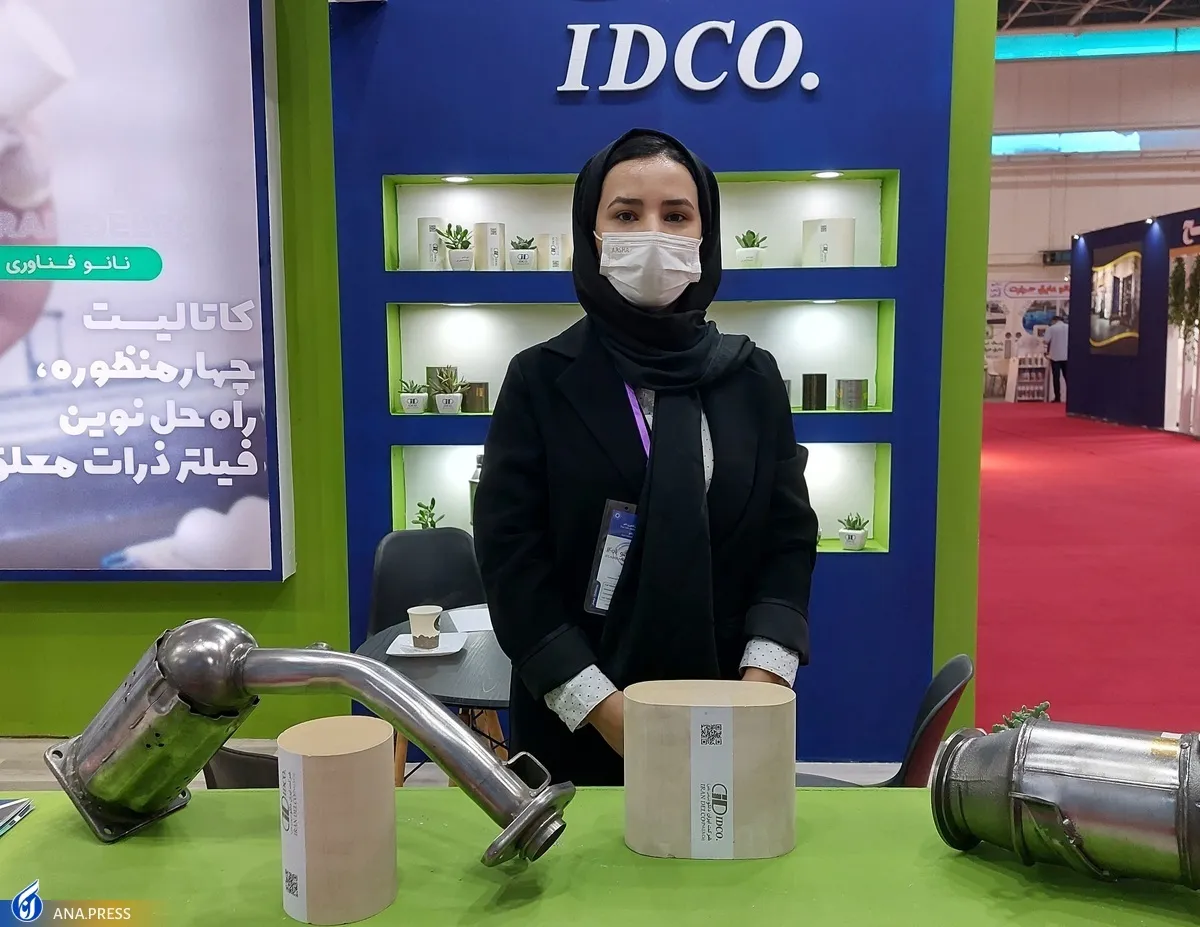Iran-Made Nano Catalyst Omits 90% of Air Pollution in Vehicles

“Today, we are the only producer of catalytic converters in Iran with an annual production capacity of 12 million parts which meets the needs of Iranian automobile industry,” Shadi Razmara, the R&D specialist at the knowledge-based ‘Iran Delco’ company, told ANA on the sidelines of IRANANO 2022 exhibition in Tehran.
The 13th Nanotechnology Festival and Exhibition (IRANANO 2022) was held in Tehran on October 1-4 with participation of over 280 knowledge-based companies active in the field of nanotechnology which had presented more than 1,200 products in different areas.
“We produce catalysts for all domestic cars, Chinese vehicles (imported to Iran) and motorcycles, and this amount meets the entire domestic demand. The three-purpose catalyst converter currently omits up to 90 percent of the emissions of passenger cars and motorcycles,” she added.
Razmara said that the two big Iranian automakers, Iran Khordo and SAIPA, as well as other major automakers have been using the company’s products, adding, “We also have exported our products to Turkey and our company cooperates with universities, specially Sharif University of Technology.”
“The difference between our company's nano catalyst and other catalysts is that we have been able to lower the cross-section area and surface of the catalyst by reducing the dimensions of the catalyst and using nanoparticles. Changing the specific surface area improves the performance of the catalyst, and on the other hand, it is an environmental-friendly product because we convert the pollutants in the exhaust into less dangerous gases,” she underlined.
In meteorology, an inversion is a deviation from the normal change of an atmospheric property with altitude. It always refers to an inversion of the air temperature lapse rate, in which it is called a temperature inversion. Normally, air temperature decreases with an increase in altitude, but during an inversion warmer air is held above cooler air.
An inversion traps air pollution, such as smog, close to the ground. An inversion can also suppress convection by acting as a "cap". If this cap is broken for any of several reasons, convection of any moisture present can then erupt into violent thunderstorms. Temperature inversion can notoriously result in freezing rain in cold climates.
4155/v





















